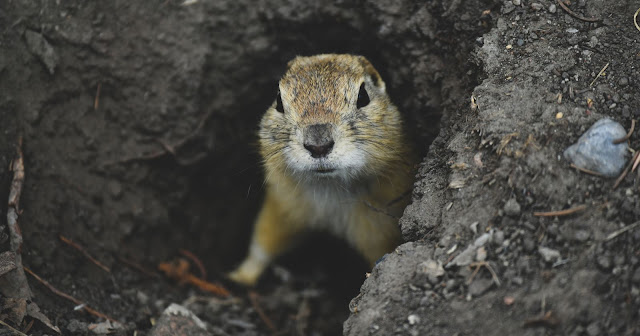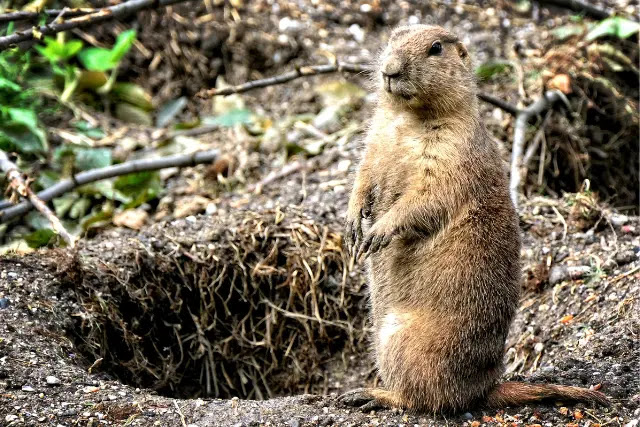Maintaining a garden or lawn can be pretty time-consuming. But it's even more difficult when pests are attacking your plants and destroying all of your efforts overnight. It's so disheartening to put in all that work just for it to be ruined by pesky critters! If you've ever gone through this, then you know the feeling.
Gophers may seem like cute little creatures, but when they start digging up your backyard, you'll quickly change your opinion about them! These rodents can be very destructive. If you have a gopher problem in your yard, it is important to take steps to get rid of them as soon as possible. As these animals spend most of their time underground, understanding the times when they come out of their burrows is also essential if you want successful measures against them.
In this blog, we will shed more light on when gophers are typically active and what you can do to protect your lawn from them. We'll also go over ways to identify their presence in your yard and effective strategies for preventing them from wreaking havoc on your landscaping projects. With this information, you'll be able to keep your outdoor spaces safe and healthy all year round!
{tocify} $title={Table of Contents}
What are gophers?
Gophers are burrowing mammals of the family Geomyidae native to North America. These animals have stout, chubby bodies and stumpy limbs with powerful claws for digging their complex tunnel systems used for food storage or bedding. They range in size from about 6 inches to almost 2 feet long and weigh an average of 1-4 lbs. Gophers live in networks of tunnels they dig in the soil and feed mainly on plants but can also eat insects and other small creatures. They are a nuisance to gardeners and can cause damage to lawns, flower beds, and other areas where they dig their tunnels.
When do gophers come out of their holes?
Gopher holes serve as safe and secure homes for gophers. Gophers typically live in burrows that they excavate from loose soil or build tunnels along existing waterways. The walls of their dens are thick, providing insulation to keep them secure during extreme weather conditions while also shielding them from predators. Inside the burrow, the gopher will sleep until emerging at night to feed on grasses, grains, tubers, bark, roots, and other vegetation growing nearby.
During the day most gophers reside safely inside their hole; only coming out at dusk when temperatures reach cooler levels. However, they can be seen on the surface during morning hours and late afternoon for short periods. It's also possible to spot them along meadows or grassland in daylight as well.
Gophers are active throughout the year, though they may become less active during the winter months. Colder temperatures slow down their metabolism which results in them becoming less active and only emerging when necessary. In more temperate climates, gophers remain sufficiently heated due to their insulated burrows and may emerge on sunny days even during colder seasons for feed.
Do gophers come out daily?
Gophers are active throughout the year, but their activity levels can vary greatly depending on the season. In general, gophers will be most active during the spring and summer months when there is an abundance of food sources available. They come out of their burrows in search of roots or other vegetation for a meal and to collect nesting material. Gophers may also surface more frequently at dusk and dawn as they scavenge for food or rebuild their tunnels. During cold winter days, however, gophers tend to stay underground where it is warmer and safer from predators. When temperatures dip below freezing or if heavy snow has covered too much ground above them, gophers may remain inside their burrow until conditions improve once again.
What are some visible indicators of gopher presence?
Gophers are small burrowing mammals that can damage vegetation, crops, and other landscapes if left unchecked. They have distinctive habits and behaviors that often reveal their presence in the area. Visible indicators of gopher presence include
- Holes in the yard or garden, usually about an inch to four inches wide
- Mounds of dirt around entrance holes
- Tunnels or tracks snaking through the lawn or garden
- Burrowing along tree trunks, flower beds, and other landscaping features
- Chewed vegetation such as plants, roots, and vegetables near areas where they are present
- Storing spoil piles outside entrances of their burrows which can be made up of clods of upturned soil mixed with plant material
Can you flood gophers out?
No, it is not possible to flood gophers out due to their ability to dig and burrow underground. Gophers build complex tunnel networks underground by digging long horizontal tunnels that are usually 12-18 inches below the surface of the soil. They then use these networks of tunnels to create multiple entrances and exits to their burrows and nest within a very wide area.
Since they spend most of their time in these protected underground areas, flooding would have no effect since water can’t reach them unless they were able to flood all surrounding areas around each burrow. In addition, gophers generally inhabit well-drained soil to make the construction of new sections easier because wetter soils make it more difficult for them to excavate material.
How to get rid of gophers in a yard
The most effective way to get rid of gophers in a yard is by trapping the animals and then disposing of them elsewhere. This can be done with humane traps that capture and hold the gopher alive without causing any harm or trauma to it. However, this method does require some maintenance, as you will need to regularly monitor the areas where you are setting your traps, remove any trapped gophers, and reset your traps if there are additional activity signs (e.g., new mounds and tunnels).
In addition to trapping, another humane method for getting rid of gophers is by using vibration, sound, and water devices that have been proven to help deter gophers from an area. These devices typically produce a loud noise or shake the ground periodically to keep pests away. Some devices even feature water-jet sprays that will shoot out an unpredictable stream of water into burrows every few minutes. Installing one of these options can be time-consuming but it isn't as labor-intensive as manual trapping and may prove more effective in the long run.
A third option that can also help get rid of gophers is to use repellents. Repellents come in a variety of forms, from granules and sprays to liquids and even smoke bombs. Most repel using strong odors or tastes, which gophers find unappealing. While this method may need more frequent reapplication to be effective, it does always mean interacting with the animal if you're looking for a humane solution.
Conclusion
Gophers primarily come out of their holes during the night. Most gophers are crepuscular animals, meaning that they are most active at dawn and dusk. During this time, you may see one or more animals emerging from their burrows to begin foraging in nearby areas.
Gophers also occasionally emerge from their underground dwellings during the day; however, these activities normally only take place on cloudy days with reduced light levels. If conditions remain dark enough throughout the day, the gopher will continue its searching until food sources run dry or until darkness sets again.



